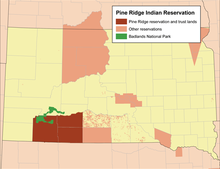
An arrest is the act of apprehending and taking a person into custody, usually because the person has been suspected of or observed committing a crime. After being taken into custody, the person can be questioned further and/or charged. An arrest is a procedure in a criminal justice system, sometimes it is also done after a court warrant for the arrest.
The following outline is provided as an overview of and topical guide to criminal justice:
Vehicular homicide is a crime that involves the death of a person other than the driver as a result of either criminally negligent or murderous operation of a motor vehicle.
False arrest, unlawful arrest or wrongful arrest is a common law tort, where a plaintiff alleges they were held in custody without probable cause, or without an order issued by a court of competent jurisdiction. Although it is possible to sue law enforcement officials for false arrest, the usual defendants in such cases are private security firms.
Atwater v. Lago Vista, 532 U.S. 318 (2001), was a United States Supreme Court decision which held that a person's Fourth Amendment rights are not violated when the subject is arrested for driving without a seatbelt. The court ruled that such an arrest for a misdemeanor that is punishable only by a fine does not constitute an unreasonable seizure under the Fourth Amendment.
In the United States, self-defense is an affirmative defense that is used to justify the use of force by one person against another person under specific circumstances.
Resisting arrest, or simply resisting, is an illegal act of a suspected criminal either fleeing, threatening, assaulting, or providing a fake ID to a police officer during arrest. In most cases, the person responsible for resisting arrest is criminally charged or taken to court.

"Stop and identify" statutes are laws in several U.S. states that authorize police to lawfully order people whom they reasonably suspect of committing a crime to state their name. If there is not reasonable suspicion that a person has committed a crime, is committing a crime, or is about to commit a crime, the person is not required to identify himself or herself, even in these states.
Manslaughter is a common law legal term for homicide considered by law as less culpable than murder. The distinction between murder and manslaughter is sometimes said to have first been made by the ancient Athenian lawmaker Draco in the 7th century BC.
Ker v. California, 374 U.S. 23 (1963), was a case before the United States Supreme Court, which incorporated the Fourth Amendment's protections against illegal search and seizure. The case was decided on June 10, 1963, by a vote of 5–4.
Brendlin v. California, 551 U.S. 249 (2007), was a decision by the Supreme Court of the United States that held that all occupants of a car are "seized" for purposes of the Fourth Amendment during a traffic stop, not just the driver.
Welsh v. Wisconsin, 466 U.S. 740 (1984), was a 1983 case before the US Supreme Court determining that a warrantless home arrest without exigent circumstances violates the Fourth Amendment protection against unlawful search and seizure.
Miller v. United States, 357 U.S. 301 (1958), was a landmark decision by the United States Supreme Court, which held that one could not lawfully be arrested in one's home by officers breaking in without first giving one notice of their authority and purpose.
United States v. Robinson, 414 U.S. 218 (1973), was a case in which the United States Supreme Court held that "in the case of a lawful custodial arrest a full search of the person is not only an exception to the warrant requirement of the Fourth Amendment, but is also a reasonable search under that Amendment."
English law contains homicide offences – those acts involving the death of another person. For a crime to be considered homicide, it must take place after the victim's legally recognised birth, and before their legal death. There is also the usually uncontroversial requirement that the victim be under the "King's peace". The death must be causally linked to the actions of the defendant. Since the abolition of the year and a day rule, there is no maximum time period between any act being committed and the victim's death, so long as the former caused the latter.

Plummer v. State was an 1893 court case decided by the Indiana Supreme Court. The case overturned a manslaughter conviction, ruling that the convicted defendant had been protecting himself from the illegal use of force by a police officer. It is widely quoted on the internet, under the false belief that it gives citizens the right to resist an unlawful arrest by force, including deadly force. The full citation is Plummer v. State, 135 Ind. 308, 34 N.E. 968 (1893).
Manslaughter is a crime in the United States. Definitions can vary among jurisdictions, but manslaughter is invariably the act of causing the death of another person in a manner less culpable than murder. Three types of unlawful killings constitute manslaughter. First, there is voluntary manslaughter which is an intentional homicide committed in "sudden heat of passion" as the result of adequate provocation. Second, there is the form of involuntary manslaughter which is an unintentional homicide that was committed in a criminally negligent manner. Finally, there is the form of involuntary manslaughter which is an unintentional homicide that occurred during the commission or attempted commission of an unlawful act which does not amount to a felony.
Utah v. Strieff, 579 U.S. 232, 136 S. Ct. 2056 (2016), was a case in which the Supreme Court of the United States limited the scope of the Fourth Amendment's exclusionary rule.

On April 11, 2021, Daunte Wright, a 20-year-old black American man, was fatally shot in Brooklyn Center, Minnesota, by police officer Kimberly Potter during a traffic stop and attempted arrest for an outstanding warrant. After a brief struggle with officers, Potter shot Wright in the chest once at close range. Wright then drove off a short distance until his vehicle collided with another and hit a concrete barrier. An officer administered CPR to Wright; paramedics were unable to revive him, and he was pronounced dead at the scene. Potter said she meant to use her service Taser, shouting "Taser! Taser! Taser!" just before firing her service pistol instead.
Lange v. California, 594 U.S. ___ (2021), was a United States Supreme Court case involving the exigent circumstances requirement related to the Fourth Amendment to the United States Constitution. The Court ruled unanimously that the warrantless entry into a home by police in pursuit of a misdemeanant is not unequivocally justified.







